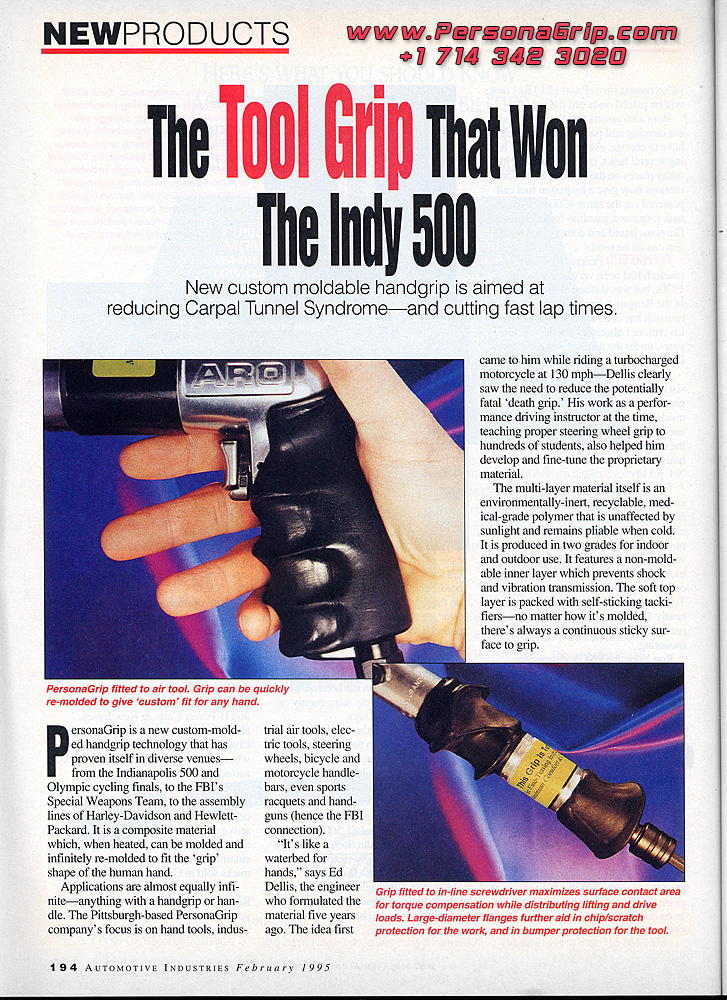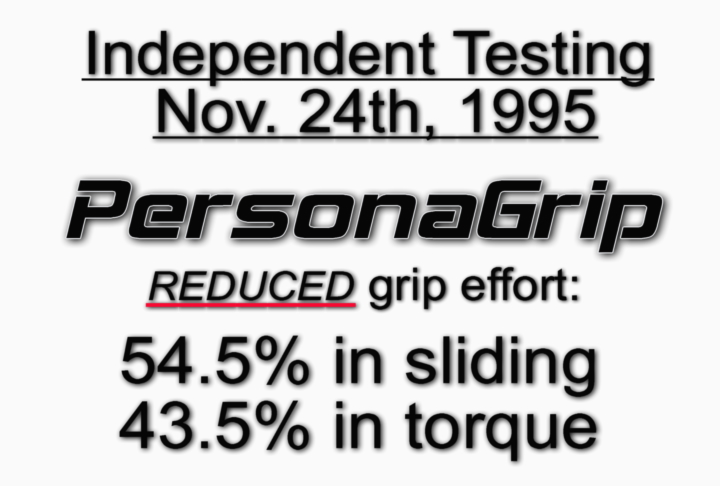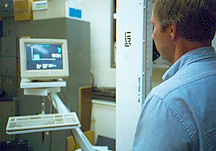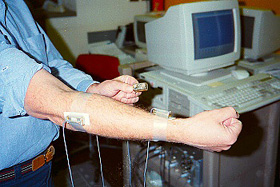Industrial Ergonomics Training -- Helping Assembly Line Workers Avoid Injury
Training Programs show you how to Design, Build, and Implement
Custom-Moldable Ergonomic Handgrips.

Industrial Ergonomics Using Moldable Handgrip Technology
- End Effector Applications & Accommodating Multiple Parts at a Single Workstation
- Accommodating Hand Movement – Micro Adjusting
- Dual-Modality Vibration Attenuation – Isolation/Absorption
- Multi-User vs. Single-User Work Environments
- Force/Motion Analysis Using Video
- Ergonomic Information Capture
- Leveraging Basics
- Ingress/Egress Handgrip Molding Techniques
- Basic Hand Anatomy
- Timing Exertions
- Time/Temperature Relationships of Various Moldable Materials
- Various Surface Treatments and the Effect on Hand Grip Performance
- Handgrip Welding, Filleting, Burnishing, etc.
- Record Keeping, and Organization.


Proven by Science
Unexpectedly high reductions in grip effort revealed a new Paradigm for contact at the Human-Machine Interface.


Training Programs -
You will learn how to design and install PersonaGrip custom-moldable ergonomic handgrips on tools for your industrial athletes. Its application on end effectors on your assembly lines is addressed as well.
Robots & Cobots
End Effectors on robot arms can now be molded to accept the exact contours of the items being handled. By heating PersonaGrip‘s moldable material after a positive attachment to the effector, impressions can be made into the surface that allow non-slip grasping at lower clamping forces due to the leveraging effect created by the impressions.
Impressions for multiple items at a single workstation can also be designed into the surface by simply repeating the molding procedure until non-interfering patterns are developed for both items. Once cooled, the shape is retained until heated and remolded again.
PersonaGrip’s Two-Day, Training Programs are designed for companies interested in establishing an in-house ergonomics program that can reduce injury costs through relaxed grips on tools, and reduce costs due to mishandled parts by robots due to parts slippage. In turn, this helps improve employee health and morale while also improving productivity since fewer mishandled parts by robots result in greater efficiency and lower costs.
Day-One Training – Trainees can expect four hours classroom time covering the basics of ergonomic handgrip design theory. Afterwards, they observe Dellis molding grips on various tools.
After lunch, hands-on ergonomic handgrip molding is explored so that trainees are adequately prepared for Day Two.
Day-Two Training – Trainees are put in real-world live ergonomic handgrip development — under close supervision and guidance. Using the lessons learned from grip designs for hand tools, end effector training is addressed next.
By extension, demonstration of the molding skills learned during the ergonomic lessons shows how the leveraging principles apply equally to end effectors. Lessons on how multiple parts handling at a single station teaches techs how to address interference patterns while minimizing leveraging losses.
Tech Support – Trainees now receive ergonomic assistance using today’s smartphone videochat technology. Via videochat, trainees can share their design issue, and receive advice from PersonaGrip personnel and other trainees around the globe on how to remold the custom hand grips properly. This valuable insight is clearly visible since trainees can now SEE solutions using PersonaGrip’s in-house tools.
After training, industrial workers know how to use their new ergonomic leveraging-type hand grips.
On site, videos reveal force/motion analyses of industrial workers interfacing with their generic tools. Focusing on handgrip exertion, assembly line workers get training and learn how to use less force to complete the task with their new leveraging ergonomic hand grips.
Since industrial athletes are mostly creatures of habit, they get provided with a new awareness of how to grasp a tool, and carefully time their exertions throughout a stroke to minimize injury and conserve energy.
